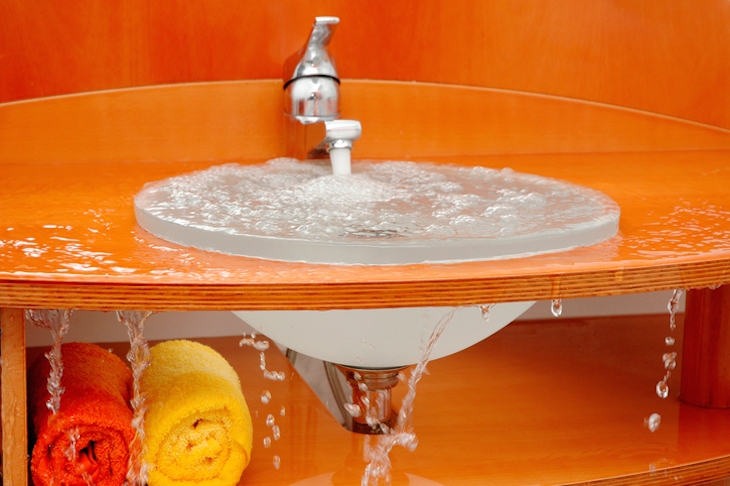As I watched the water creep across the kitchen floor, powerless to prevent a mini tsunami, I had an inkling of how it must feel to be the victim of flooding or burst pipes.
By the third time the water invaded my kitchen, I was at the end of my tether. It later transpired that the base of my washing machine had broken in two (apparently not an uncommon occurrence) hence the folly of replacing the washers and hoping for the best. While this was a problem fixable with a mop, a packet of kitchen roll and a new appliance, it brought to mind the multitude of horror stories told by friends and family over the years.
From neighbours’ leaking toilets and radiators to dodgy showers and baths, many of us can recall water damage to our homes made through no fault of our own. Now new research has revealed the scale of the problem. According to Direct Line, in the last five years alone, over four million people across the UK have experienced damage to their property because of an escape of water from a neighbour’s home. An unlucky 1.5 million have experienced this more than once.
Each year, an estimated 800,000 people have to deal with the problem of water escaping from a neighbouring property. This results in a bill of £707 million each year for repairs to damage caused by water seeping in from a neighbour’s property, working out as £858 on average per incident. One in seven have had to fork out over £1,500 to repair the damage, while one in 20 have spent more than £2,000.
So, water, water, everywhere, nor any drop to drink. And the unfortunate truth is that the first sign of water seeping into another person’s property can mask a more serious problem: it’s often already caused serious and potentially lasting damage, and perhaps has gone unnoticed by the relevant home owner. Damage to plaster is the most common result, followed by paint and damp in the walls, but it can also cause damp in the ceilings, wallpaper damage, damp in floorboards or carpet or damage to soft furnishings. Of those affected, nearly half were living in a flat at the time of the incident, showing how vulnerable flat dwellers are to their neighbour’s plumbing problems.
Rebecca Clapham, head of household products at Direct Line, said: ‘Water can cause significant amounts of damage to someone’s home. What looks like a fairly small amount can seep through floorboards, get behind tiles and cause thousands of pounds worth of damage to someone’s home. Identifying the source of the leak as quickly as possible is essential, but if you don’t know where it is, switching the water off is a good start.’
Direct Line says that not having access to the problem property resulted in one in 16 people calling the police out to enter their neighbour’s home. Some went straight to the source of the problem either by turning off the water supply to their neighbour’s property themselves (11 per cent) or asking the water board to turn off the supply (eight per cent).
So, if this happens to you, make sure to take swift action. In the meantime, you’d be wise to check your current buildings and content insurance policy to ensure you are properly covered – look out for key phrases such as property owner’s liability cover for accidental damage or damage to a third party property.
Helen Nugent is Online Money Editor of The Spectator






Comments